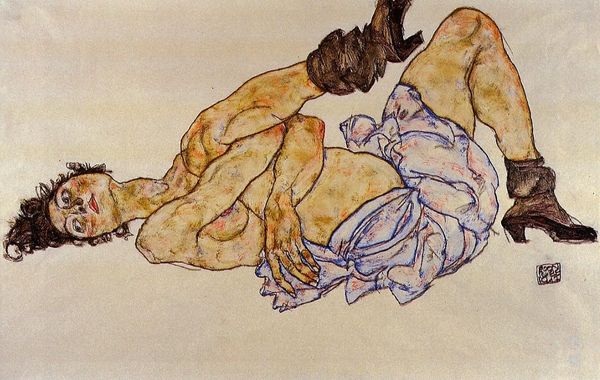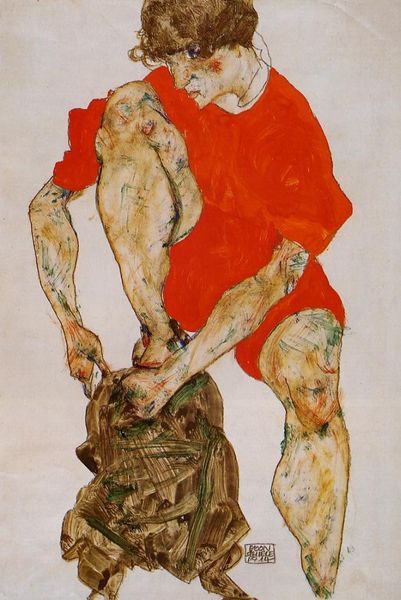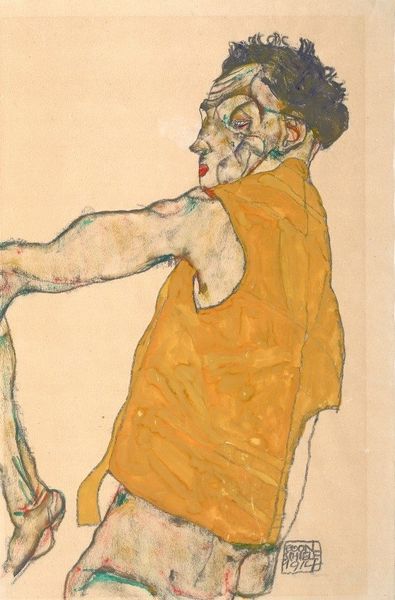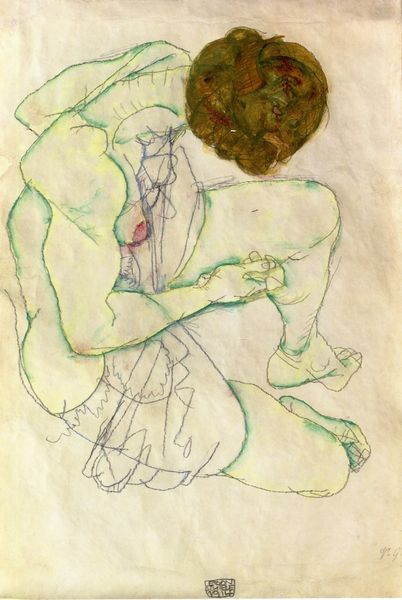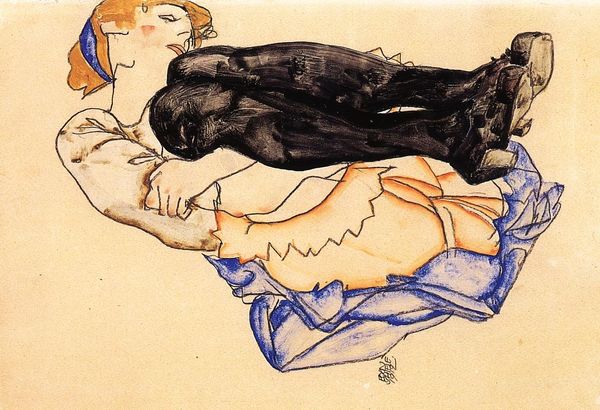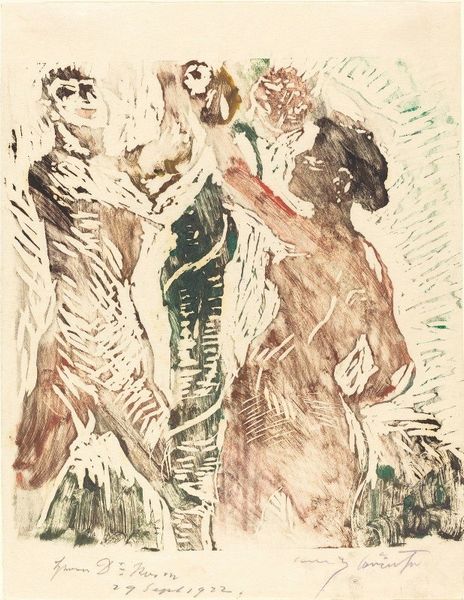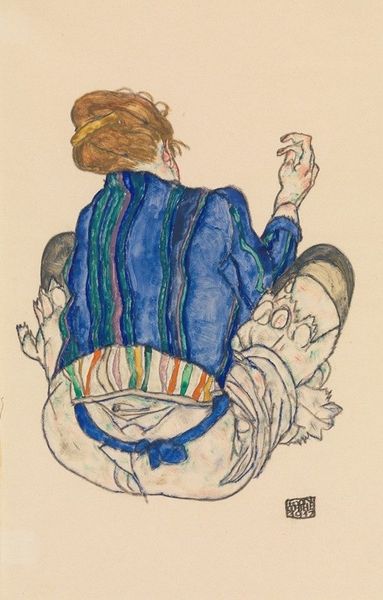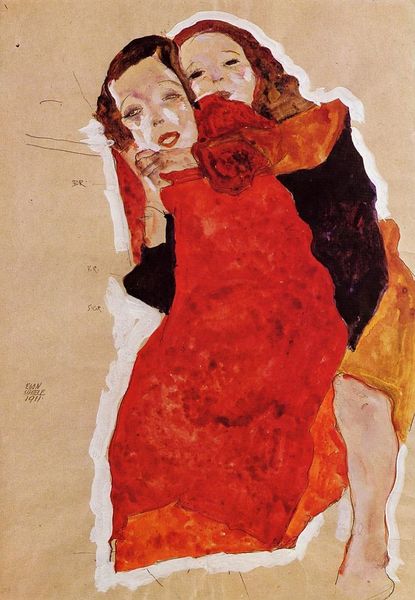
drawing, acrylic-paint, paper, ink
#
portrait
#
drawing
#
acrylic-paint
#
paper
#
ink
#
expressionism
#
portrait drawing
#
nude
#
male-nude
Copyright: Public domain
Egon Schiele made this twisted, tender drawing of himself and his wife Edith, with pencil and gouache, at some point before they both tragically died in the 1918 flu pandemic. The couple is bound together in a sort of embrace, yet there's a tension, a nervousness evident in the angular lines, the almost sickly palette of pale yellows and browns, the exposed genitals. Schiele’s figures are always so raw, so vulnerable. Look how he renders their flesh, not with smooth, flattering tones, but with a kind of scratchy, almost violent energy. You can practically feel the pressure of the pencil on the paper, the urgency of his mark-making. The jagged, spiky halo around the couple feels particularly poignant. Is it a symbol of protection? Or a reflection of the inner turmoil that plagued Schiele throughout his short life? It reminds me of the work of another Austrian artist, Oskar Kokoschka. Like Kokoschka, Schiele was interested in pushing the boundaries of representation, using distortion and exaggeration to convey the complexities of human emotion. This drawing is a testament to art’s ability to capture the messy, contradictory nature of love and loss.
Comments
No comments
Be the first to comment and join the conversation on the ultimate creative platform.

